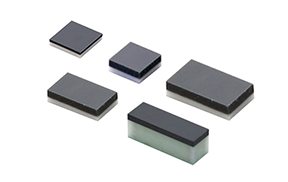RFID Products


Sparked by the spread of COVID-19, the "contactless" trend that reduces opportunities for contact with people and objects has gained strength throughout society. The term "touchless economy," which indicates contactless economic activities, is also attracting attention. Against this backdrop, cashless payments have permeated our lives.
For example, many people shop using cashless payments such as by charging money to a payment app on a smartphone and then scanning a barcode at a payment terminal or by touching a reader with an IC card charged with electronic money. Furthermore, we introduce here the cashless trend that is undergoing a remarkable evolution. This includes the appearance of next-generation cashless systems that confirm identity with facial recognition, making it is possible to make payments carrying nothing on you.
Cashless payments reduce opportunities for contact such as when handing over cash and enhance convenience for consumers. In addition, there are also various benefits for stores that introduce cashless payments. Examples include labor saving with respect to cash register operations and improvement in services using customer data.
First, let's look at the example of labor saving with regard to cash register operations. The stores of a major fashion chain have installed self-checkout machines. These unmanned self-checkout machines instantly calculate the total amount to be paid when a customer places a shopping basket containing products in the recess next to them and operates the touch panel. The customer then pays with one of various forms of cashless payment. This completely eliminates opportunities for contact with store staff. That means this system is attracting attention as a service that combines cashless payment and self-checkout machines.
RFID technology supports this system. This technology scans ID information on tags with short-range wireless communication using radio waves. All the price tags of products are embedded with IC tags that record type, amount, and other information. That ID information is then scanned by an RFID reader. RFID technology is also being used in IC cards and other components. Its use is progressing in a wide range of fields including fashion, retail, medical care, manufacturing, and logistics.

Next, let's look at the example of combining cashless payment with facial recognition technology.
Unmanned next-generation cashless stores even without cash registers are opening in countries all over the world. When a customer enters an unmanned store lined with products, confirmation of their identity is completed with facial recognition or app recognition. The multiple cameras installed in the store and the weight sensors on the product shelves then detect the products that the customer has placed in their shopping cart. There are cases in which payment is billed to the customer's credit card at a later date or the customer pays with a payment app or IC card on the spot.
Moreover, stadiums where sports competitions and other events are held have embarked on the full-scale introduction of completely cashless and facial recognition technologies on their premises upon updating their facilities. They have introduced entry and payment services using facial recognition upon limiting payment for purchases on their premises by electronic money, code payments, and other forms of cashless payment. Visitors register their facial image and credit card information in advance. The system then makes a comparison with those facial images using cameras installed in the stores at the time of payment. This is a mechanism in which payment is completed by the customer by inputting their PIN after their identity has been confirmed. These facilities are providing "new normal" consumption experiences such as by allowing customers to pay when shopping with facial recognition while wearing a mask.
According to a comparison of the cashless payment rate of countries around the world announced by the Japanese Ministry of Economy, Trade and Industry, there are many countries where the majority of citizens use cashless payments. For example, the rate is 96.4% in South Korea, 68.6% in the U.K., 65.8% in China, and 58.2% in Australia. Now that the pace of the touchless economy is accelerating due to the COVID-19 pandemic, a future may soon arrive when there is no longer a need to bring a wallet when shopping and when cash itself no longer exists.